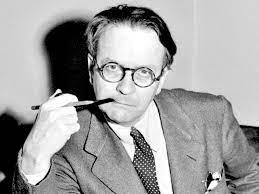Table of Contents
- Vomit
- De-That
- Write with Purpose
- Fine for Novels, but what about…?
- Backwards reading
- What’s the purpose?
I read a post recently about the 250 word rule. It is a writing technique and novelist Raymond Chandler‘s ‘one-rule’. Apparently, Chandler used his typewriter, to type on index cards.
He had one rule: something had to happen on every notecard.
By following the rule, his stories moved at a brisk pace.
For Chandler, it trained him to be crisp and direct.
In this short Essay David Perrel writes, ‘The online writing equivalent is to make sure your reader has an epiphany every 250 words. This heuristic makes your prose more concise, which increases the regularity of “woah, I didn’t know that” moments which make reading so enjoyable.‘
Vomit
General copywriting advice is, when we write our first draft, to put it aside for a day, then come back to it with fresh eyes and a sharp pencil and hack away at it, removing every sentence and word that doesn’t have an impact or meaning. Gary Halbert called this first draft the vomit draft as he just wrote everything as it came into his head, no corrections no edits, no concern for punctuation or grammar.
De-That
Halbert also advises you to ‘de-that‘ your first draft – literally going through your draft and deleting every instance of the word ‘that’. I remember the first time I did this I couldn’t believe the results. Almost never does ‘that’ serve any purpose in your copy.
Oops! I ended up talking about Halbert again, but this post was about the Raymond Chandler rule. (BTW this is about 250 words)
Write with Purpose
Applying the Chandler rule to your writing makes it more productive. I find I have to be in a certain writing mood for this to be effective… but it helps you to write with purpose.
If you follow Eddie Shleyner (if you don’t you should) you will see numerous examples of Huge value in around 250 words!
Fine for Novels, but what about…?
Chandler was a novelist, so we are talking about something happening every 250 words in a Novel (The average word count for a Novel – based on my unscientific google research – is about 90,000 words) in Marketing copy you need to cut this down considerably.
Long-form articles should deliver in every hundred words, email or landing page copy can be as extreme as every sentence. So even following Chandler’s one rule, you need to sharpen that pencil, de-that your copy and hack your way to delivering real value for the reader.
Backwards reading
In the past, I used to struggle with editing. I didn’t want to chop out my copy. It took a long time to write and some of the sentences were quite good. So, I didn’t want to lose them.
Another editing technique that I found myself doing before I realised it was a thing – is to read your copy backwards. Not each word, because that would be silly, but each sentence. It is easier this way to see if there is power in your writing. If it still makes sense backwards then it means each sentence is ‘stand-alone’ meaningful.
What’s the purpose?
I will end with another ‘rule’ that I really like.
The purpose of the first sentence is to make the reader want to read the second sentence. The purpose of the second sentence is to make the reader want to read the third.

13 Replies to “The 250 Word Rule, and some others”
Comments are closed.